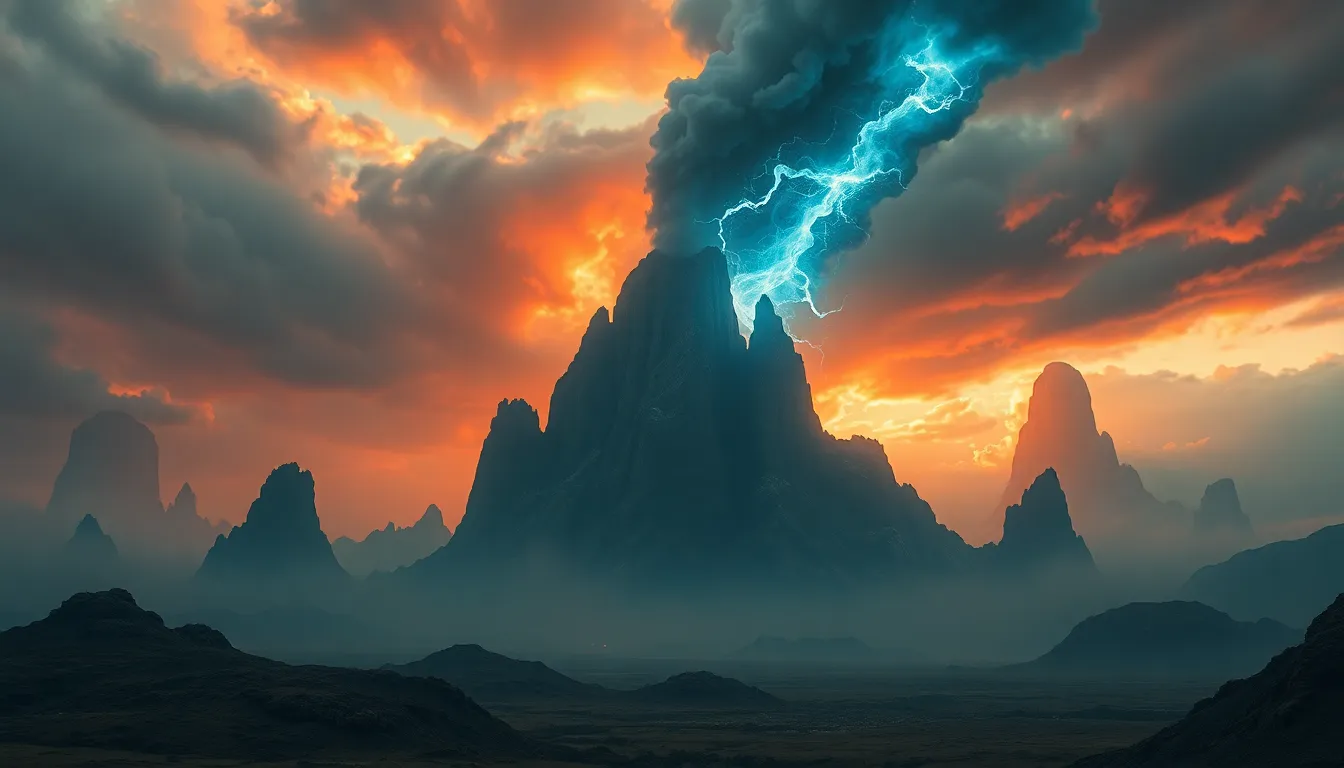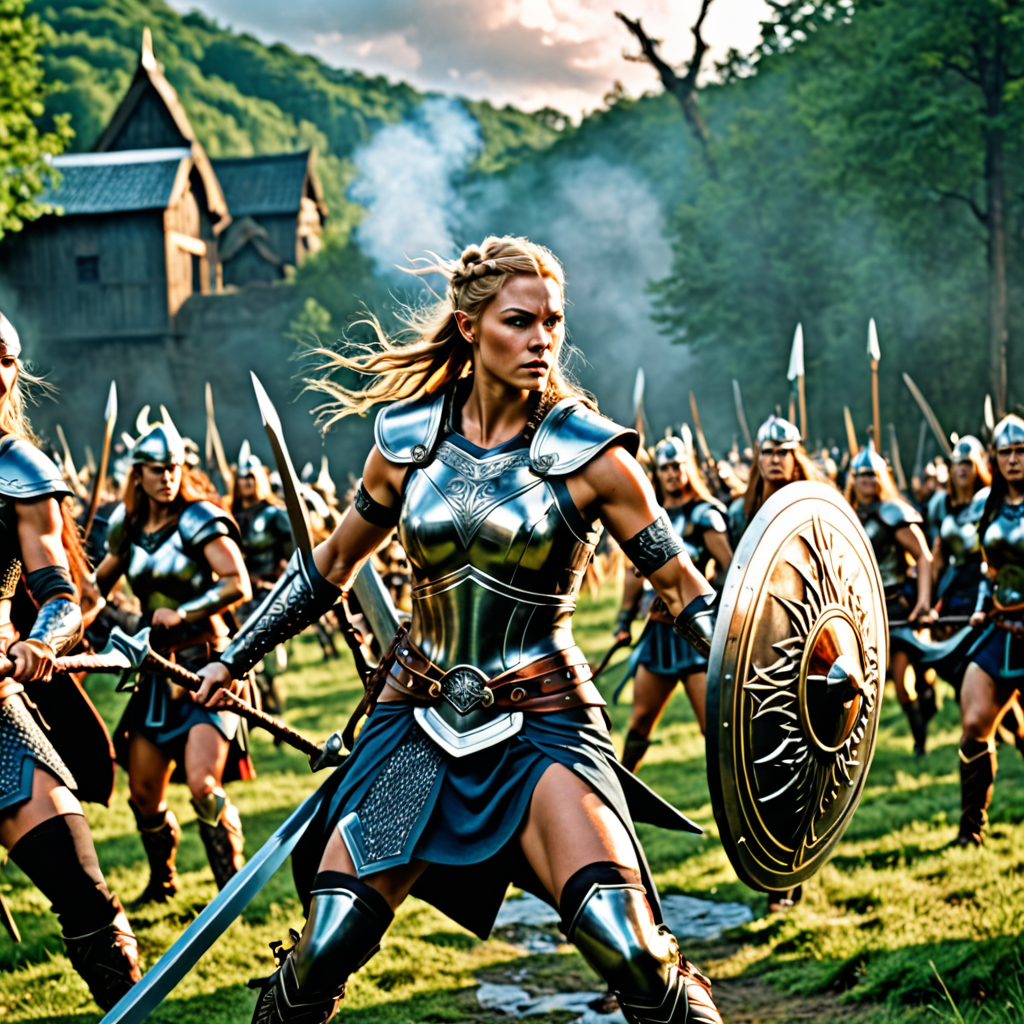The Underworld: A Mythical Journey into the Unknown
I. Introduction to the Underworld
The concept of the Underworld has fascinated humanity for centuries, representing a realm that transcends the physical world. Many cultures have developed rich narratives around the Underworld, often viewing it as a place where souls journey after death. This article explores the significance of the Underworld across various cultures, the mythical journeys associated with it, and its implications in human understanding of life and death.
II. Historical Perspectives on the Underworld
A. Ancient civilizations and their interpretations
1. Mesopotamian beliefs
In ancient Mesopotamia, the Underworld, known as Kur, was a dreary place where the dead resided. Mesopotamian myths depicted it as a shadowy realm devoid of joy, reflecting the civilization’s views on death and the afterlife.
2. Egyptian afterlife concepts
The Egyptians had a more elaborate view of the afterlife, believing in a journey through the Underworld, known as Duat. Here, the soul faced trials and judgments before entering the paradise of the Field of Reeds.
B. The Underworld in Greek mythology
1. Hades and the realm of the dead
In Greek mythology, Hades is both the name of the god and the realm of the dead. It is depicted as a complex place with various regions, including the Elysian Fields for the righteous and Tartarus for the wicked.
2. Chthonic deities and their roles
Chthonic deities, such as Persephone and Hades, played crucial roles in managing the souls of the deceased and maintaining the balance between life and death.
III. Cultural Variations of the Underworld
A. The Underworld in Eastern philosophies
1. Hinduism and the concept of Naraka
In Hindu beliefs, Naraka is a temporary realm where souls are judged and punished for their earthly deeds before being reborn. This cycle of life, death, and rebirth reflects the fundamental tenet of karma.
2. Buddhism and the cycle of rebirth
Buddhism introduces the concept of samsara, the cycle of birth and rebirth, where the Underworld is not a permanent destination but part of a larger journey towards enlightenment and liberation.
B. Indigenous perspectives on the afterlife
1. Native American beliefs
Many Native American cultures view the Underworld as a place of ancestors, emphasizing a connection to the past and the importance of honoring those who have passed on.
2. African traditional religions
In various African traditional religions, the Underworld is often seen as a continuation of life, where spirits coexist with the living, maintaining a dynamic relationship with the material world.
IV. The Symbolism of the Underworld
A. Themes of death and rebirth
The Underworld often symbolizes death but is equally a place of rebirth. Many myths depict characters undergoing transformation through their journeys in the Underworld, highlighting the cyclical nature of existence.
B. The Underworld as a metaphor for the unconscious mind
Psychologically, the Underworld can represent the unconscious, a space where hidden fears, desires, and unresolved conflicts reside. This metaphor invites exploration of the self and understanding of inner struggles.
C. The hero’s journey and trials faced in the Underworld
The hero’s journey often includes a descent into the Underworld, where trials test their resolve and character. This descent is pivotal in many myths, illustrating growth through adversity.
V. Key Myths and Stories of the Underworld
A. Orpheus and Eurydice: Love and loss
The tale of Orpheus, who ventured into the Underworld to retrieve his beloved Eurydice, showcases themes of love, loss, and the limits of human perseverance. His journey highlights the emotional depth associated with the Underworld.
B. The Epic of Gilgamesh: Quest for immortality
In the Epic of Gilgamesh, the hero’s encounters with the Underworld reflect humanity’s quest for immortality and the acceptance of mortality, resonating with timeless human concerns.
C. The Tale of Persephone: Seasonal cycles and renewal
The myth of Persephone explains the changing seasons and the cyclical nature of life. Her descent into the Underworld and subsequent return symbolize the interplay of life and death.
VI. Literary Depictions of the Underworld
A. Dante’s “Divine Comedy” and its influence
Dante Alighieri’s “Divine Comedy” presents a vivid portrayal of the Underworld (Inferno), influencing Western literature by exploring themes of sin, redemption, and divine justice.
B. Virgil’s “Aeneid” and the journey of Aeneas
Virgil’s “Aeneid” features Aeneas’s descent into the Underworld, offering insights into Roman beliefs about death and the afterlife, as well as the importance of destiny.
C. Contemporary literature’s reinterpretation of the Underworld
Modern literature often revisits the Underworld, reimagining it in various contexts, including fantasy genres where characters confront their fears and undergo transformative journeys.
VII. The Underworld in Art and Popular Culture
A. Visual arts: Paintings, sculptures, and their representations
The Underworld has been a popular subject in visual arts, with artists like Hieronymus Bosch and Gustave Doré capturing its complexity through imaginative depictions that reflect cultural beliefs and emotions.
B. Film and television portrayals of the Underworld
Films and television series often explore the Underworld, using it as a setting for character development and plot progression. Examples include The Matrix and What Dreams May Come, which delve into afterlife themes.
C. Video games and interactive experiences related to the Underworld
Video games like Hades and God of War allow players to engage with Underworld narratives, combining mythology with interactive storytelling and offering unique perspectives on ancient tales.
VIII. Psychological Interpretations of the Underworld
A. The Underworld as a representation of fears and desires
From a psychological standpoint, the Underworld embodies the conflicts and challenges individuals face in confronting their fears and desires, making it a vital aspect of personal growth.
B. Jungian analysis of mythological motifs
Carl Jung’s theories suggest that myths of the Underworld reflect archetypal patterns in the human psyche, revealing the collective unconscious and the shared experiences of humanity.
C. The therapeutic value of confronting the Underworld
Engaging with Underworld narratives can serve therapeutic purposes, allowing individuals to process grief, trauma, and existential questions, facilitating healing and understanding.
IX. The Underworld’s Role in Human Understanding
Throughout history, the Underworld has served as a powerful symbol in human understanding of life, death, and the afterlife. It encourages introspection and exploration of the unknown, ultimately guiding individuals in their personal journeys. By studying the Underworld across cultures, we gain valuable insights into our shared humanity and the universal questions that connect us all.



